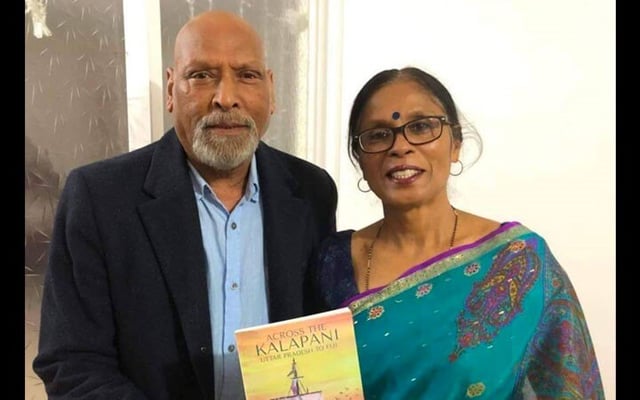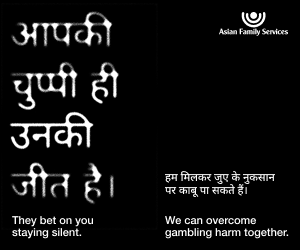A Fiji Indian’s voyage of self-discovery

The Leonidas sat anchored off the Fiji coastline for several weeks before it was allowed to offload its cholera-infested human cargo on shore.
It was the first of 42 ships that transported around 61,000 Indian indentured labourers to Fiji over 87 voyages between 1879 and 1916 (when the practice was officially abolished).
From 1834, when the first boatload of indentured labourers disembarked in Mauritius, around one million indentured labourers had been transported to plantations strewn across eight colonial destinations around the world, culminating in Fiji.
‘Across the Kalapani: Uttar Pradesh to Fiji’ chronicles the first arrivals to Fiji under the infamous indentured labour system devised by Great Britain to bolster the plantation economy of its far-flung colony in the Pacific.
Girmit Day, named after the indenture agreement signed by the first batch of Indian indentured labourers who arrived in Fiji aboard the Leonidas on 14 May 1879, is observed by the Fiji Indian community worldwide.
The indenture contract was for a period of five years.
Over 450 “girmitiyas” signed up to work on the sugarcane plantations owned by white settlers who took over the island nation after it became a Crown colony under the Deed of Cession signed on 10 October 1974 by 13 Fijian chiefs.
Sir Hercules Robinson signed the document on behalf of the British Crown.
But for author Sunita Narayan the book marks a personal odyssey of self-discovery as she follows the journey of five men recruited from her ancestral village in Uttar Pradesh to toil on rubber plantations in Fiji.
The book, the first of a planned trilogy, is part history and part fiction. But above all, it is an act of catharsis for a woman, torn between dual cultures, who is in search of her identity.
The paradox at the core of the book is that the journey of the indentured labourers, plucked from their roots in India, is ultimately one that denies them the scope of returning to their point of origin.
Their identities remain permanently stranded between two cultures, India and Fiji.
Narayan attempts to plumb the depths of this paradox as she plots the journey of Mangal, loosely modelled on her father’s older brother, who leaves his village in the hinterland of UP to board a vessel headed for Fiji.
“I’m a Fiji Indian and a mainland Indian. I’m also a New Zealand national,” Narayan points out. “Fiji Indians carry this split identity within them wherever they go”.
Narayan started work on her book in 2004. The book was published in May this year.
“I did most of the writing up in the air”, she recalls. “I have flown to Fiji at least 22 times, and taken long-haul flights to Canada and the US.”
Narayan likes to describe the book as an amalgam of history and imagination.
“A lot of Fiji Indians from my generation are very interested in visiting India to learn where they came from,” Narayan notes. “But I can see that the next generation, who are the main target of my book (apart from my own self-discovery) , are also getting interested in exploring their identity.”
So, what has Narayan discovered about herself in the making of this book?
“The main discovery for me happened on my first visit to India in 2005,” Narayan reminisces. “My plane was about to land in Mumbai airport. I was so overwhelmed by emotion and my eyes welled up in tears. I was about to set foot on the land of my forefathers. At that moment, it became apparent to me who I was. I realised that I was very much an Indian at heart.”
The first thing Narayan did when she stepped on the tarmac at Mumbai airport was to touch the ground and say “I’m here.”

The Leonidas sat anchored off the Fiji coastline for several weeks before it was allowed to offload its cholera-infested human cargo on shore.
It was the first of 42 ships that transported around 61,000 Indian indentured labourers to Fiji over 87 voyages between 1879 and 1916 (when the practice was...
The Leonidas sat anchored off the Fiji coastline for several weeks before it was allowed to offload its cholera-infested human cargo on shore.
It was the first of 42 ships that transported around 61,000 Indian indentured labourers to Fiji over 87 voyages between 1879 and 1916 (when the practice was officially abolished).
From 1834, when the first boatload of indentured labourers disembarked in Mauritius, around one million indentured labourers had been transported to plantations strewn across eight colonial destinations around the world, culminating in Fiji.
‘Across the Kalapani: Uttar Pradesh to Fiji’ chronicles the first arrivals to Fiji under the infamous indentured labour system devised by Great Britain to bolster the plantation economy of its far-flung colony in the Pacific.
Girmit Day, named after the indenture agreement signed by the first batch of Indian indentured labourers who arrived in Fiji aboard the Leonidas on 14 May 1879, is observed by the Fiji Indian community worldwide.
The indenture contract was for a period of five years.
Over 450 “girmitiyas” signed up to work on the sugarcane plantations owned by white settlers who took over the island nation after it became a Crown colony under the Deed of Cession signed on 10 October 1974 by 13 Fijian chiefs.
Sir Hercules Robinson signed the document on behalf of the British Crown.
But for author Sunita Narayan the book marks a personal odyssey of self-discovery as she follows the journey of five men recruited from her ancestral village in Uttar Pradesh to toil on rubber plantations in Fiji.
The book, the first of a planned trilogy, is part history and part fiction. But above all, it is an act of catharsis for a woman, torn between dual cultures, who is in search of her identity.
The paradox at the core of the book is that the journey of the indentured labourers, plucked from their roots in India, is ultimately one that denies them the scope of returning to their point of origin.
Their identities remain permanently stranded between two cultures, India and Fiji.
Narayan attempts to plumb the depths of this paradox as she plots the journey of Mangal, loosely modelled on her father’s older brother, who leaves his village in the hinterland of UP to board a vessel headed for Fiji.
“I’m a Fiji Indian and a mainland Indian. I’m also a New Zealand national,” Narayan points out. “Fiji Indians carry this split identity within them wherever they go”.
Narayan started work on her book in 2004. The book was published in May this year.
“I did most of the writing up in the air”, she recalls. “I have flown to Fiji at least 22 times, and taken long-haul flights to Canada and the US.”
Narayan likes to describe the book as an amalgam of history and imagination.
“A lot of Fiji Indians from my generation are very interested in visiting India to learn where they came from,” Narayan notes. “But I can see that the next generation, who are the main target of my book (apart from my own self-discovery) , are also getting interested in exploring their identity.”
So, what has Narayan discovered about herself in the making of this book?
“The main discovery for me happened on my first visit to India in 2005,” Narayan reminisces. “My plane was about to land in Mumbai airport. I was so overwhelmed by emotion and my eyes welled up in tears. I was about to set foot on the land of my forefathers. At that moment, it became apparent to me who I was. I realised that I was very much an Indian at heart.”
The first thing Narayan did when she stepped on the tarmac at Mumbai airport was to touch the ground and say “I’m here.”










Leave a Comment